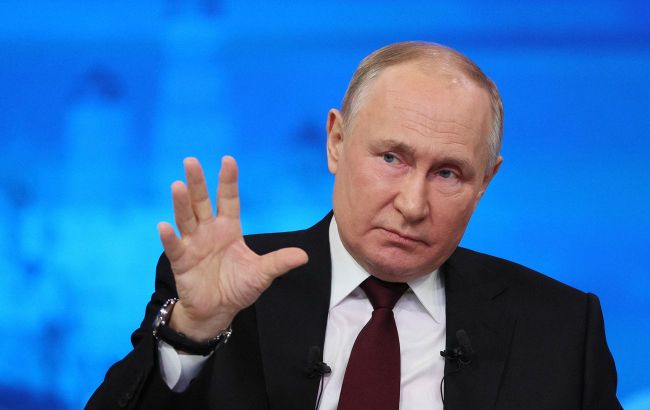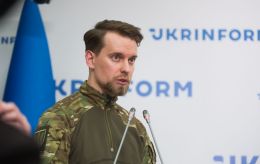Kremlin using 'divide and rule' to manipulate battlefield - ISW
 Russian President Vladimir Putin (photo: Getty Images)
Russian President Vladimir Putin (photo: Getty Images)
The authorities of Russia are using traditional information narratives and nuclear threats in an attempt to drive a wedge between the US, Ukraine, and NATO, according to a report by the US-based Institute for the Study of War (ISW).
The report cites a statement by Kremlin spokesperson Dmitry Peskov on July 16, in which he confirmed that all provisions of Russia’s nuclear doctrine, including the responsibility of nuclear powers not to “incite” non-nuclear countries, remain in force.
He emphasized that nuclear-armed states must be held accountable for inciting non-nuclear nations.
The ISW reminded that in the fall of 2024, the Kremlin updated its nuclear doctrine. A new provision was added stating that Russia would consider an act of aggression against it by a non-nuclear state, if supported or joined by a nuclear state, as a joint attack.
Experts suggest this change was aimed at deterring Western support for Ukraine during key political discussions in late 2024.
False impression
On Wednesday, July 16, Dmitry Peskov stated that Europeans maintain a wildly militaristic attitude toward Moscow in response to a question about US President Donald Trump's initiative to provide Ukraine with increased military aid through NATO member countries.
The Kremlin spokesman also called on the international community to pressure Ukraine to start bilateral negotiations with Russia. The Institute considers this stance to be opposite to the West’s calls for pressuring Moscow to engage in meaningful dialogue to end the war.
“This approach is likely to falsely portray Russia as willing to negotiate while undermining Ukraine's credibility,” the report states.
Additionally, according to analysts, on July 15, Russian Foreign Minister Sergey Lavrov said that the goal of the war against Ukraine is to eliminate the threats NATO has created on Russia’s borders.
Shift in focus
Institute analysts believe that all these new messages reflect the Kremlin’s use of rhetorical tactics it has consistently employed throughout the war to deter Western support for Ukraine.
At the same time, ISW notes that Moscow has shifted its emphasis: the focus is no longer so much on preventing new aid but rather on reducing the support already provided and trying to break the ties between the US and its transatlantic allies.
Experts view this new Moscow tactic as a response to President Trump’s recent display of renewed US determination to supply weapons to Ukraine and support NATO.
Analysts believe the Kremlin is prioritizing information campaigns aimed at undermining NATO unity and deepening divisions between the US and its European allies.
“The Kremlin is prioritizing informational campaigns aimed at undermining NATO unity and stoking discontent between the United States and its European allies in order to degrade Ukraine's defense capabilities and achieve its longstanding war aims that amount to Ukraine's capitulation,” the Institute for the Study of War concluded.
In June, Trump confirmed that the US would adhere to Article 5 of the NATO Charter on collective defense.
Following a series of large-scale attacks on Ukraine, the American leader demanded that the Kremlin agree to a ceasefire deal by September 2.
If no agreement is reached, the US will impose high tariffs on countries selling energy resources to Russia.

